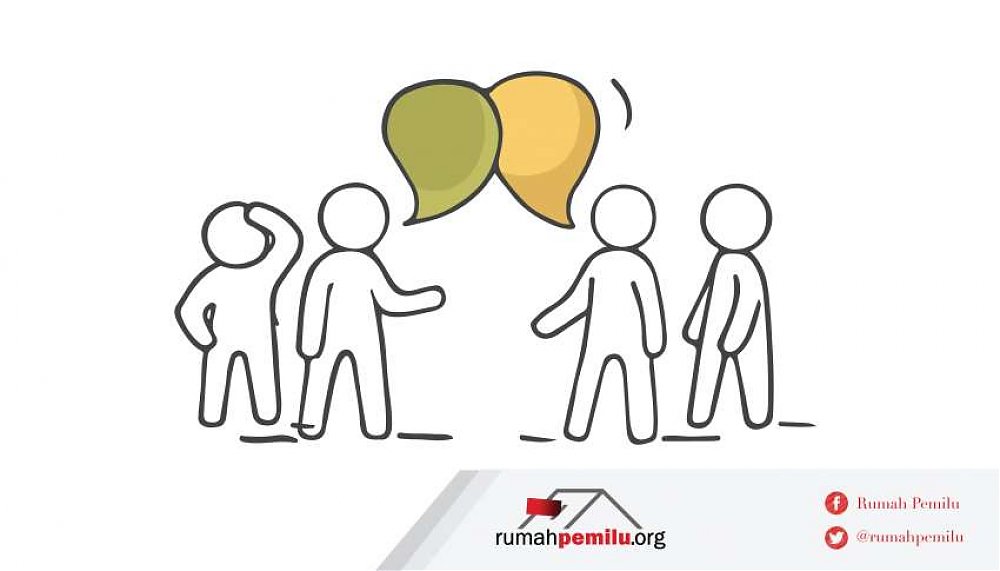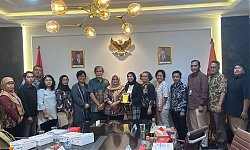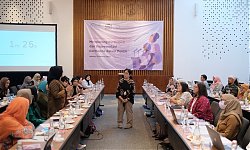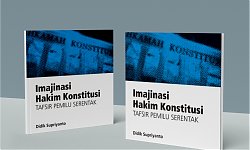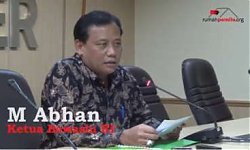Gilda R. Daniels in Voter Deception (2010) defines voter suppression as an attempt to prevent certain unwanted voters or groups of voters from exercising their right to vote. These efforts aim to do a variety of things, including winning over certain candidates by preventing voters identified or thought to have voted for opposing candidates, from registering as voters or exercising their right to vote.
Voter suppression is a common phenomenon in the United States. There are many examples of voter suppression in the course of this country's democracy, ranging from stricter requirements to register as voters, to new forms of voter suppression that use technology to manipulate voter behavior or hoaxes that are spread to deceive voters so that voters are reluctant to cast their votes.
At a time when newly freed slaves were given the right to vote, Southern states imposed various conditions to be able to vote, such as voting taxes and literacy tests. Even in 2006, in several counties in the state of Virginia with sizable minority populations, voters received automated calls providing false information that they (the minority group) would be arrested if they tried to vote on election day. In fact, false news was spread that the location of the polling stations had changed. Indeed, a typical election phenomenon in the US, many leaflets containing misinformation are distributed on behalf of official government bodies (Daniels 2010, p.348).
Brian Freeman et al. (2009, p.2-5) classifies voter suppression into four behavioral categories, namely direct threats or intimidation, disinformation, disrupting the opponent's communication lines so that it is difficult for opponents to communicate with voters, and challenging a person's right to vote, such as the right to vote for mental disabilities. Of the four classifications, intimidation and disinformation are forms of voter suppression whose impact is difficult to measure.
Meanwhile, the Transformative Justice Coalition of the United States stated that there were 61 forms of voter suppression. I grouped 35 forms of voter suppression based on three stages of the election, namely the voter registration process, campaigning, as well as voting and counting.
|
Voter Registration |
Campaign |
Voting and Counting |
|
|
|
From the classification of voter suppression carried out by Freeman et al, as well as the forms of voter suppression mentioned by the Transformative Justice Coalition, it can be concluded that voter suppression can be carried out by two actors. First, the candidate, the candidate's campaign team, and the candidate's supporters. Second, policy makers through regulations in the law or legislation.
Voter suppression in election regulations
The author identifies that there are at least two rules in the Election Law No. 7/2017 that open a gap for voter suppression, namely the requirement to provide voting rights and voting services.
First, the issue of voting requirements. In the section on the right to vote in the law, it is stated that all Indonesian citizens (WNI) aged at least 17 years have the right to vote. However, Article 348 limits the right to vote by stipulating that voters who are entitled to vote at TPS are those who can show an electronic identity card (e-KTP). Without showing an electronic ID card, a person who actually already has the right to vote cannot cast his vote.
This also happened in the Pilkada Law No. 10/2016. Article 57 requires that the electronic ID card will determine whether or not the right to vote can be used.
A little leeway occurred thanks to the Decision of the Constitutional Court (MK) No. 20/PUU-XVII/2019 which states that a Certificate from the Population and Civil Registration Service (Disdukcapil) can still be used until the recording of the e-KTP has reached 100 percent. It was this decision that prevented the widespread occurrence of voter suppression in the 2019 Simultaneous Elections and the 2020 2020 Simultaneous Regional Head Elections (Pilkada) because there were still voters who did not have an e-KTP.
The single number identity issued by the civil registry office is indeed used in several countries to register voters, such as in Norway, Sweden, Albania, and Spain. (ACE Project). The goal is to reduce voter registration costs. However, both data collection based on national identity numbers and the appointment of physical cards, in practice in various countries including Indonesia, often do not benefit marginal groups and rely heavily on outreach to state administrative services.
In Indonesia, in every election, the voting rights of indigenous peoples, disabilities, voters in prisons and transgender people are always an issue. Indigenous peoples, for example, cannot access population services because they live in customary lands and forests that are not recognized by the government as administrative areas.
Likewise, the group with mental disabilities who in the 2019 general election were clearly victims of voter suppression. The parties in the midst of the intense competition for the presidential election, two candidates challenged each other's right to vote with mental disabilities. The challenge is intertwined with the circulating hoax, which says that the KPU is giving the right to vote to crazy people.
In the frenzy of fulfilling the right to vote, I never heard of the right to vote for the homeless. I don't know how many homeless people do not have an electronic ID card in Indonesia and of course they cannot be reached by the matching and research (coklit) officers because they do not have a home. In fact, one form of voter suppression is the lack of accommodation for the homeless to vote.
Even in the 2019 election, although they have an electronic ID card but are not registered with the DPT (Permanent Voter List), voters can only use their voting rights in the RT and RW listed on their e-KTP, a rule that is also contained in the November 26, 2020 version of the Election Bill. This can certainly be identified. as voter suppression for workers who have to carry out impromptu services because Indonesia also does not have an early voting scheme or primaries and absentee voting or voting without being present.
Proof of ownership of an e-KTP or citizenship document with all its limitations, such as if a voter moves to vote it will have an impact on the ballots he/she gets, is indeed a problem in fulfilling the right to vote in Indonesia. Voting rights which are in the interests of individual voters are faced with the interests of actors participating in the election to prevent fraud such as voting repeatedly, and the interests of state actors by controlling population and citizenship records. In fact, technology can be empowered to recognize voters without an identity card, such as through biometrics. Of course, with the record that voter biometric data cannot be given to any party except the KPU. Or, there is an acknowledgment of the special identity of indigenous peoples who have not recorded their population records, as well as special accommodations for voters in conflict areas and natural disasters.
Second, the absence of early voting and various choices of voting services. After the implementation of the 2020 Simultaneous Pilkada during the pandemic, there was a public discourse that Indonesia needed other voting methods other than voting at polling stations on polling day. Early voting, absentee voting, even internet voting or i-voting are proposed. The point is to increase voting services for voters so that voters with special situations can still cast their ballots safely.
In Estonia, there are 10 voting methods that voters can choose from under various conditions, including voting at polling stations, voting by telephone, voting by post, i-voting, and voting from home. Estonia uses national identity cards to identify voters and link online voter databases with data on voters who have cast their ballots.
Revision of the election law is needed
Revision of the Election Law with the perspective of protecting and expanding voting rights services is needed. As a voter, the interest in the Election Law is the existence of regulations that guarantee that voting rights can be used easily and safely, the availability of various kinds of voting services that can be chosen, quality and integrity election participants, as well as respect for the voter's vote with accurate election results, reflecting the voter's choice.
The forms of voter suppression as mentioned by the Transformative Justice Coalition also deserve the attention of election organizers. Not only accommodating the voting rights of vulnerable groups, but also conducting massive socialization regarding the requirements to become a voter and all things regarding elections, and providing adequate technical guidance to election officials so that there is no ignorance that leads to the loss of one's right to vote.
With the increasing trend of disinformation and information disruption on the internet, voters are also vulnerable to being manipulated by content on social media, as well as political advertisements targeting voters based on certain criteria. Availability of sufficient information about elections is important for every election organizer's social media. Likewise, the importance of cooperation between election administrators and social media platforms in handling disinformation and intimidation of voters spread on social media.
Nurul Amalia Salabi
Researcher at Perludem Indonesia

